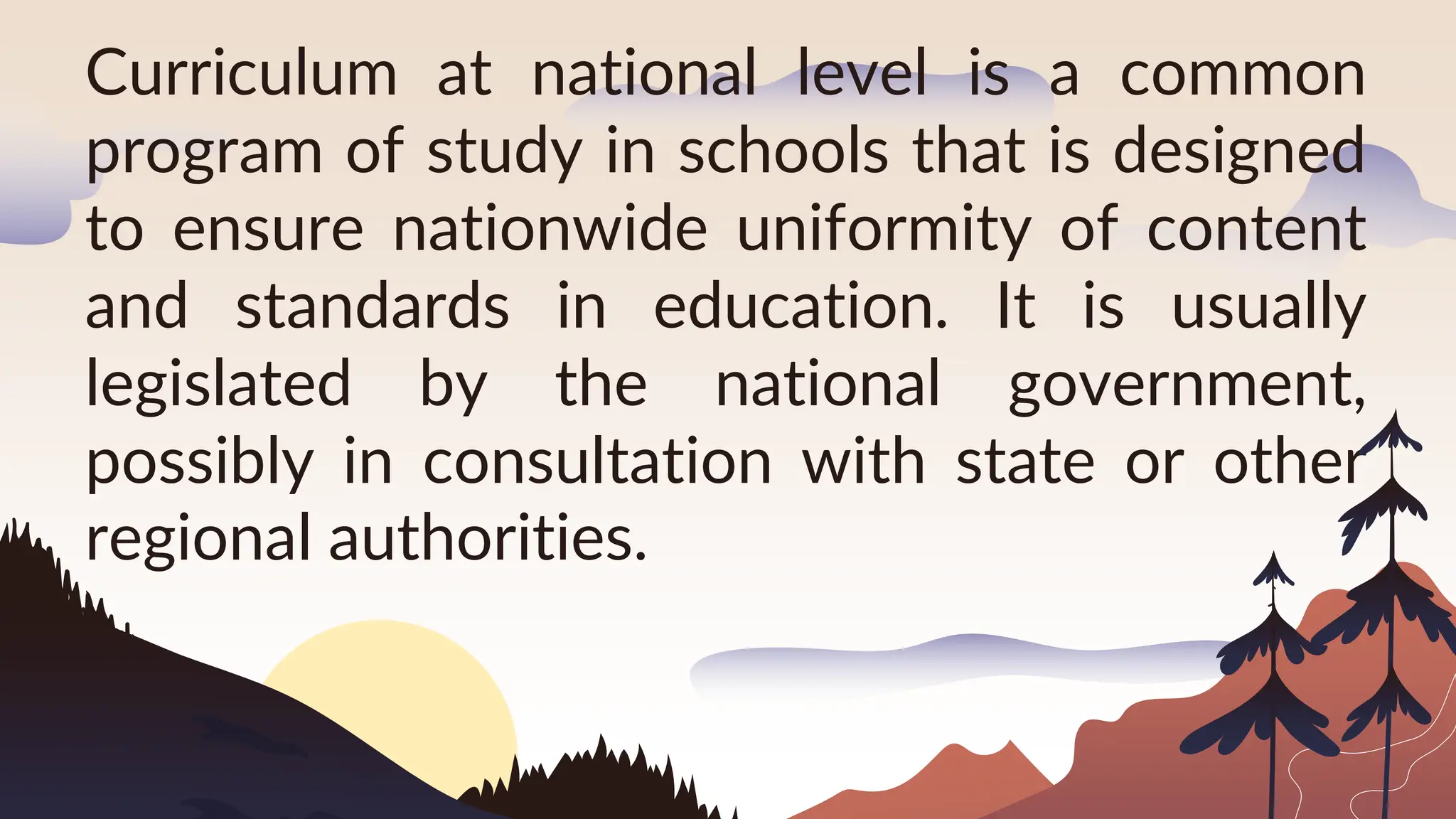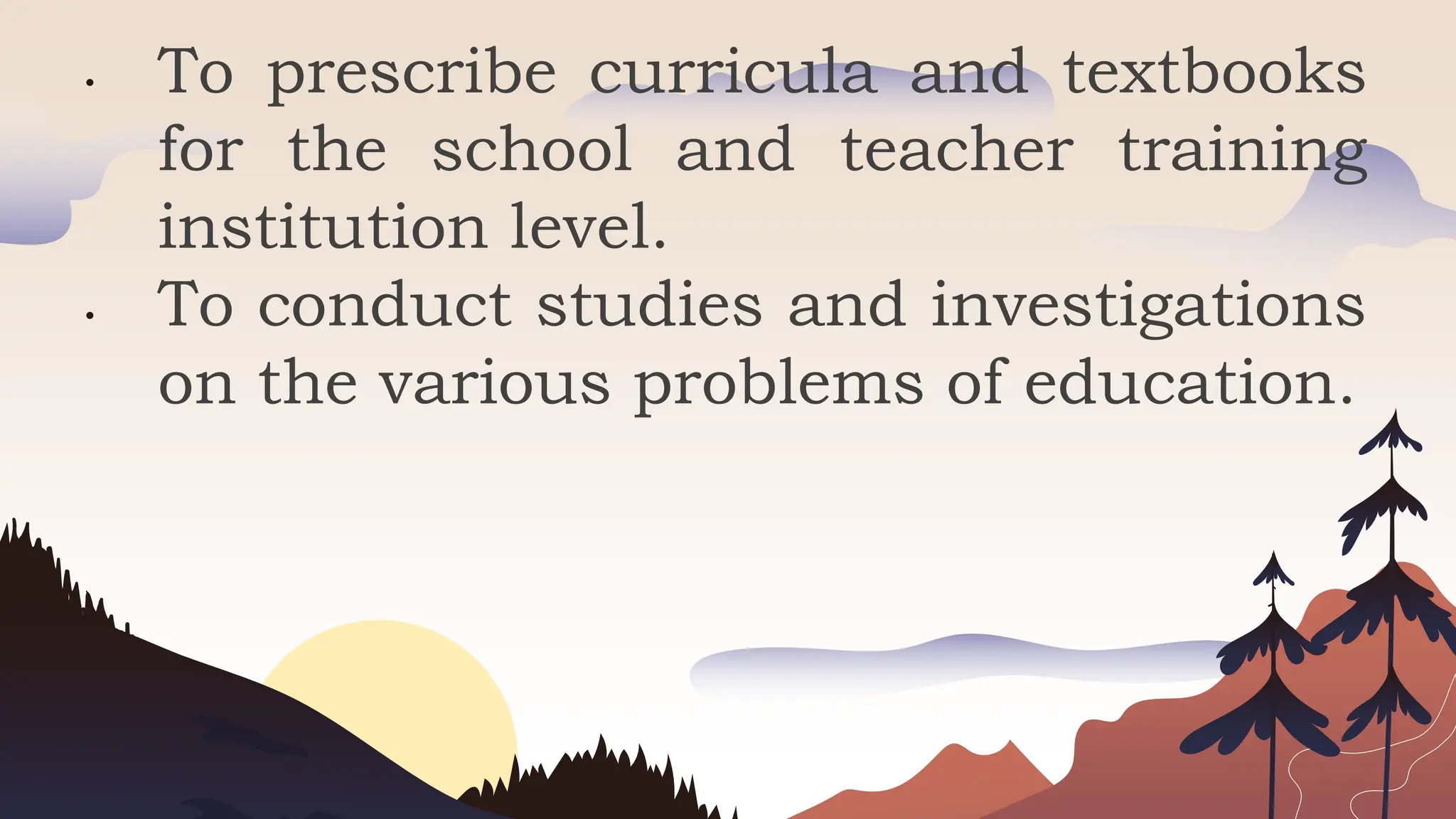The document discusses curriculum at different levels - national, state, school, class and related issues. At the national level, the central government establishes board education policies and the National Council of Educational Research and Training (NCERT) provides support and guidance on curriculum matters across India. At the state level, state governments are heavily involved in establishing curriculum standards within their framework, though local needs are not always considered. At the school level, the curriculum refers to the specific set of courses and activities offered by each school to meet student and community needs.







![National Council of Educational Research and
Training [NCERT] is the apex body that looks
after curriculum-related matters for school
education across India. The NCERT provides
support, guidance, and technical assistance to a
number of schools in India in many aspects of
enforcement of education policies.](https://image.slidesharecdn.com/curriculumatnationalstateschoolclasslevellatest-240409065742-60dab09f/75/CURRICULUM-AT-NATIONAL-STATE-SCHOOL-CLASS-LEVEL-LATEST-8-2048.jpg)
















































































![Class Syllabus includes –
• Goals and objectives of learning,
materials, and expectation from the
students’ [Knowledge and Skills].
• Available materials include
whole school, year level, and
classroom planning linked to
curriculum learning areas.](https://image.slidesharecdn.com/curriculumatnationalstateschoolclasslevellatest-240409065742-60dab09f/75/CURRICULUM-AT-NATIONAL-STATE-SCHOOL-CLASS-LEVEL-LATEST-89-2048.jpg)
![Class Syllabus includes –
• Goals and objectives of learning,
materials, and expectation from the
students’ [Knowledge and Skills].
• Available materials include
whole school, year level, and
classroom planning linked to
curriculum learning areas.](https://image.slidesharecdn.com/curriculumatnationalstateschoolclasslevellatest-240409065742-60dab09f/75/CURRICULUM-AT-NATIONAL-STATE-SCHOOL-CLASS-LEVEL-LATEST-90-2048.jpg)




















